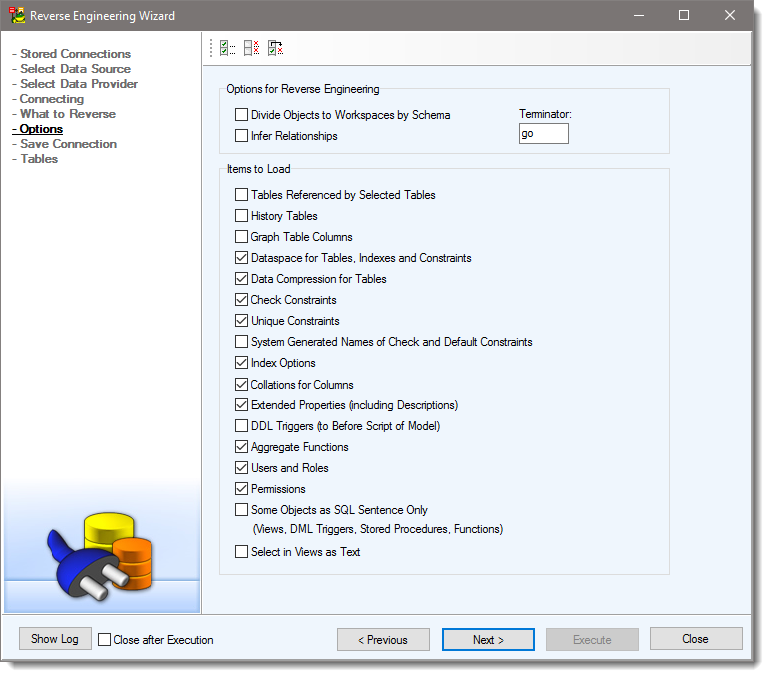Available Data Providers are:
- Connection via ADO
- Native Connection
Connection via ADO:
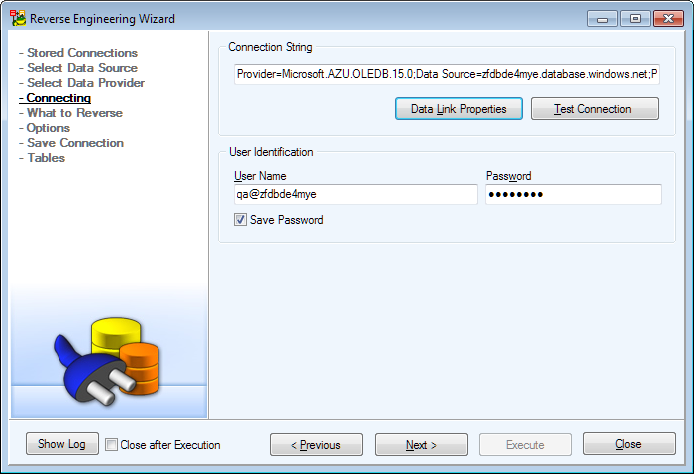
Native Connection:
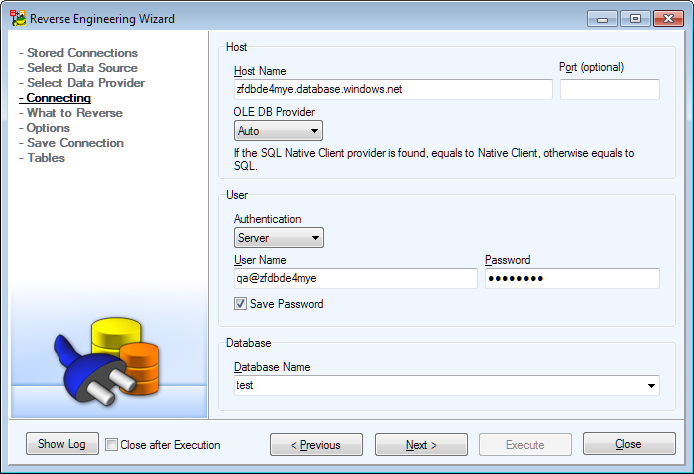
Available Data Providers are:
Connection via ADO:

Native Connection:

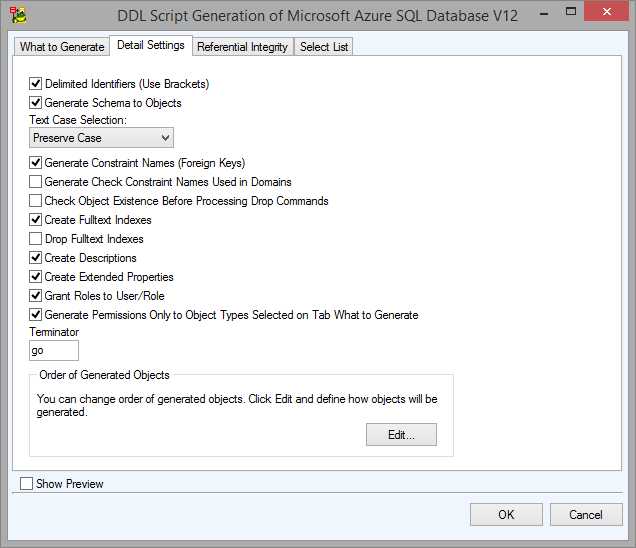
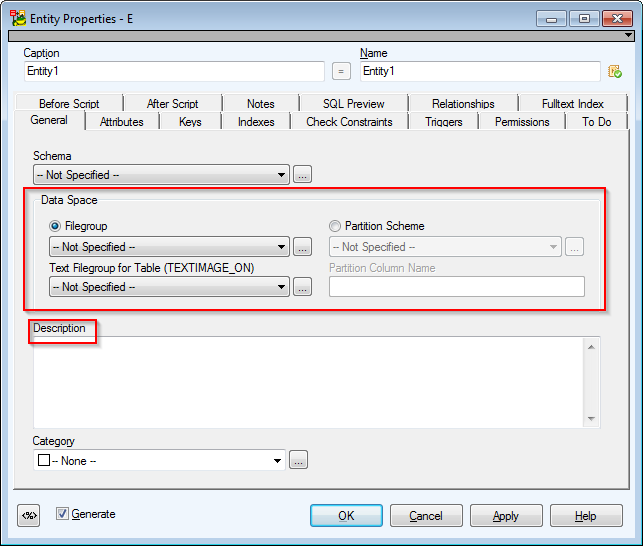
Take notice of the Data Space area. If you click Filegroup, list of file groups will become available. If you select Partition Scheme, the options will change.
Description text box - The description text is generated in final DDL script.
Note: To generate the table, column descriptions for SQL Server db in Toad Data Modeler, schema/owner has to be defined. Please see the Entity Properties form | General tab and from the Schema box select a schema or click the icon on the right to open the Schema dialog and define a new schema, then select it for the entity.
Char, NChar, NText, NVarChar, NVarChar(max), Text, VarChar, VarChar(max) - the Collation box available.
Unique indentifier - Select this item to display the Row GUID Column checkbox.
XML - You can define details on xml attribute on tab XML Data Type Properties.
Computed Column - It is not a data type. Select this item if you want to set column as computed.
Identity - Define Identity properties.
Default rule Is Default Object - Select this checkbox to bind default rule (known as default object in Microsoft SQL Server) to attribute.
Rule Object - Select a rule object that will be bound to attribute.
Take notice of the Data Space area. If you click Filegroup, list of file groups will become available. If you select Partition Scheme, schemes will be available.
Detailed settings for index of the key should be defined here.
Detailed settings of the index should be defined here.
CLR Trigger - If you select this checkbox, you can define CLR trigger on tab CLR Trigger.
Here, you can enter alias data types.
Default Object - Select a default object that will be bound to dictionary type (alias data type in Microsoft SQL).
Rule Object - Select a rule object that will be bound to dictionary type (alias data type in Microsoft SQL).
Here, you can enter CLR user-defined types.
Data Types:
New property for Schemas - Authorization (Owner Name)
Types of Stored Procedure:
Types of functions:
Select a type and see the options that display then.
If you want to generate default as default object, you have to select the Generate checkbox.
If you want to generate check constraint rule as rule object, you have to select the Generate checkbox.
If you want to enter object that is not in the Object box, select the Base Object is not in List checkbox and enter the object in the new Base Object box.
See othe objects in Model Explorer:
Example of Partition Function:
Example of Fulltext Catalog:
Filegroup and Path parameters are used only in Microsoft SQL Server 2005.
If you want to write complete DDL statement for fulltext catalog, select Generate SQL Only checkbox and write the statement to SQL tab that will display then.
Extended Properties are supported for the following objects (generally where comments are supported):
Available Data Providers are:
Connection via ADO:
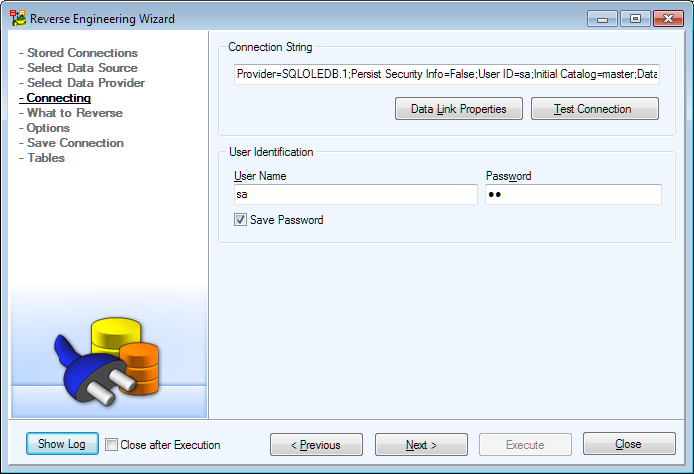
Native Connection:
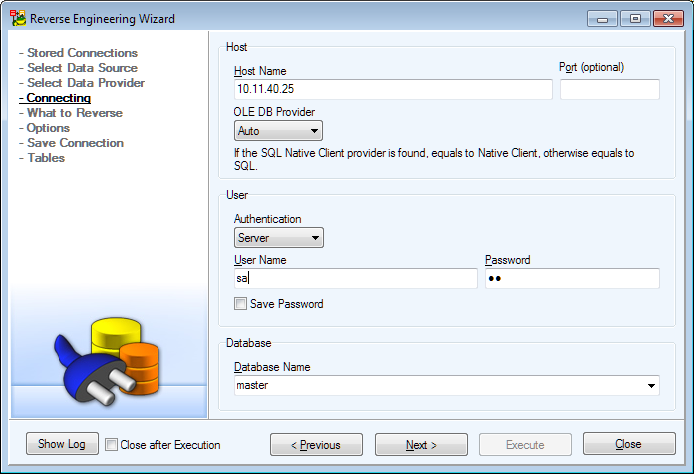
Reverse Engineering Settings
